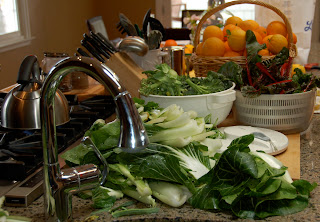In an effort to write again in less than 365 days, I opened the newly revised Google Blogger format and was astonished to find that 83 people visited my blog last month and five just yesterday. I was even more flabbergast to read that I have over 4,500 hits. What? Who? The interest in this blog has inspired me to begin writing again. After all, spring is a time for new beginnings.
I find it interesting that I happen to be facing another chickadee leaving the nest as I sit down to reflect on the past twelve months. I often write about the speed of time because it fascinates me. If only I could have understood it more when I was younger. I wonder if I would have lived each day even fuller if I knew about the speed of life earlier on?
Maybe not.
Just something to think about.
New Land
I have a new garden layout that excites me. I transplanted two large Leucadendron, and a Rosemary to make way for more vegetables. These will be planted in the ground rather than in my raised beds. Below is the "before" picture of my new planting land. I am letting the poppies do their thing until the nights warm up and I can plant tomatoes and peppers.
A Few April To Do's
Maybe not.
Just something to think about.
New Land
I have a new garden layout that excites me. I transplanted two large Leucadendron, and a Rosemary to make way for more vegetables. These will be planted in the ground rather than in my raised beds. Below is the "before" picture of my new planting land. I am letting the poppies do their thing until the nights warm up and I can plant tomatoes and peppers.
A Few April To Do's
- April is a great time for soil preparation. I always add chicken manure, some of my compost and alfalfa pellets. I till it into the soil and then let it sit for awhile before planting. This year the evenings are still quite cool, so the soil is waiting patiently.
- Clean up any flowering shrubs like azaleas and rhododendrons and begin feeding them their acid plant food once a month until the Fall.
- Check your irrigation system thoroughly unclogging emitters and testing timers.
- Begin to add mulch to existing plants just covering the roots not too close to the stem.
- Design your vegetable garden so that you are ready as soon as the weather permits to plant warm season vegetables.
Can You Guess THIS Spring Flower?
Its a succulent!
Aeonium Schwarzkopf
If you are a follower of this blog, you know that I am a huge fan of succulents. They add texture, variety and interest to all gardens. They also show off long-lasting flowers.
In honor of Chandra, who is experiencing her own new beginning after relocating to Tennessee, I re-planted a strawberry pot she made me several years ago.
It used to be filled with succulents that happily found new homes within my garden as they grew-up. This will be the pot's first venture into strawberries. I will think of Chandra each time I harvest a strawberry.
(See April 2010 Posting: Best Laid Plants... I mean, Plans... to read about the creations Chandra and I made with succulents)
I am excited about writing again. It amazes me that I so fondly wrote about Jeffrey's departure from the nest (See May 2010 and June 2010 Postings) almost two years ago. Indeed time speeds by. I may not have known it when I was younger.
But I know it now.
It is mind boggling that my second chick is leaving the nest.
Spring is a time to celebrate new beginnings.
And you KNOW I love celebrations!


































































